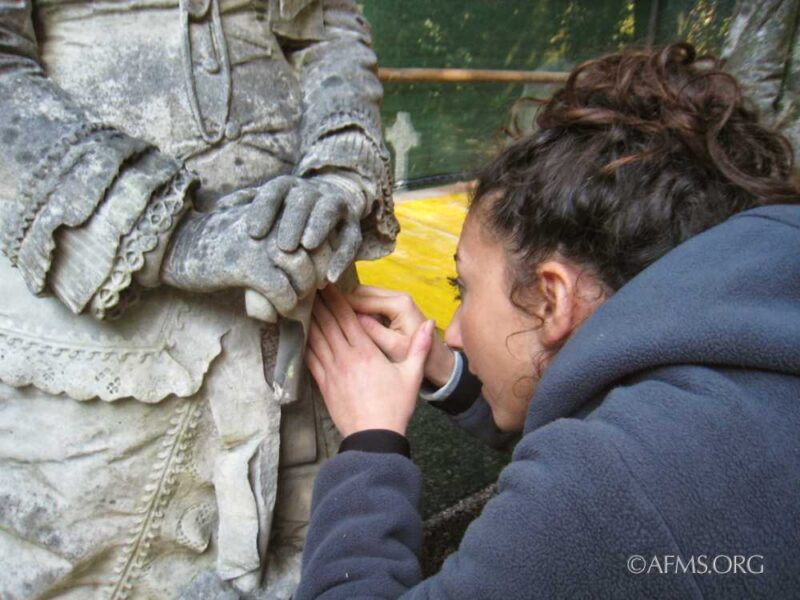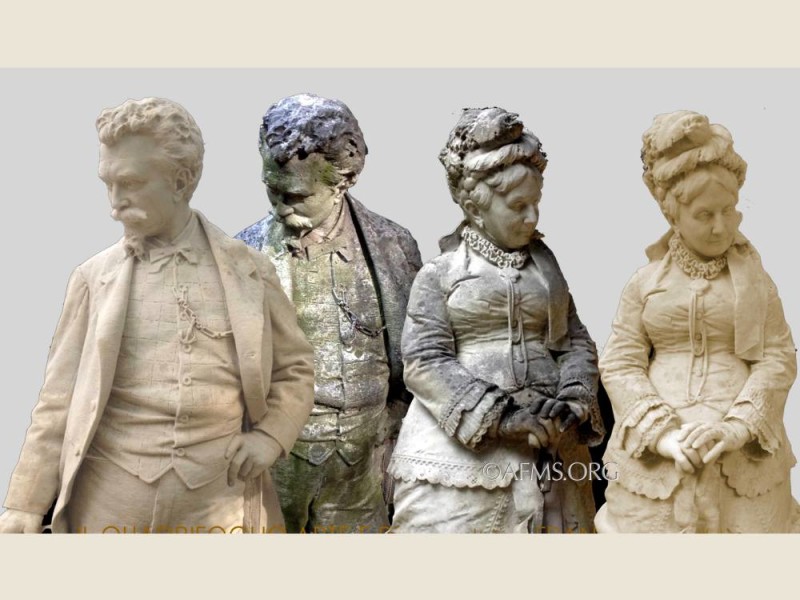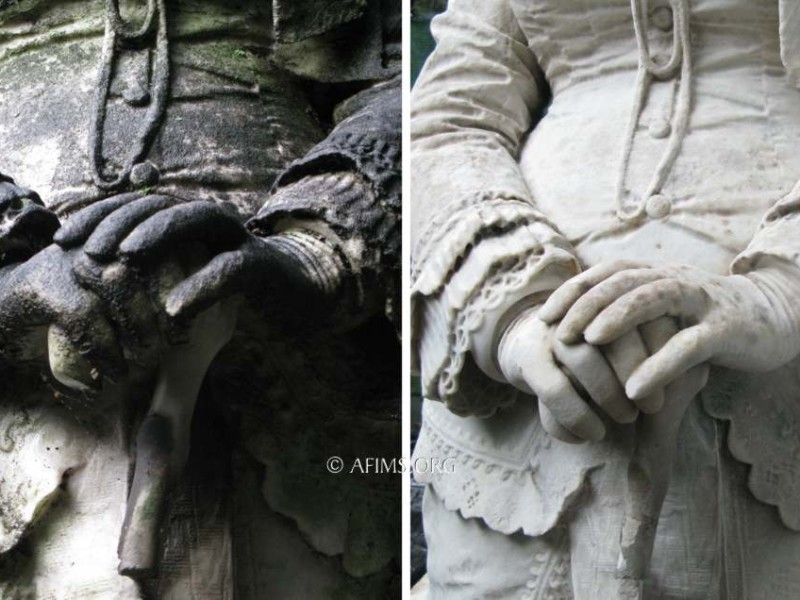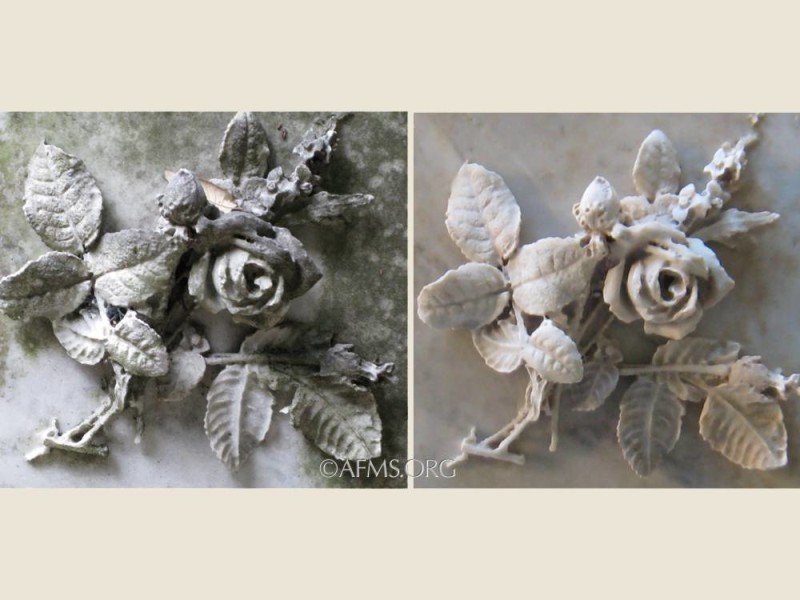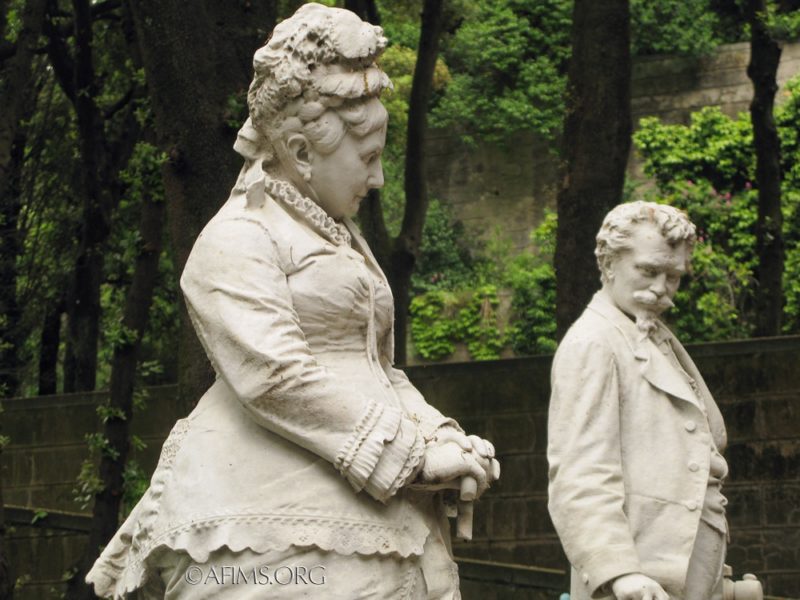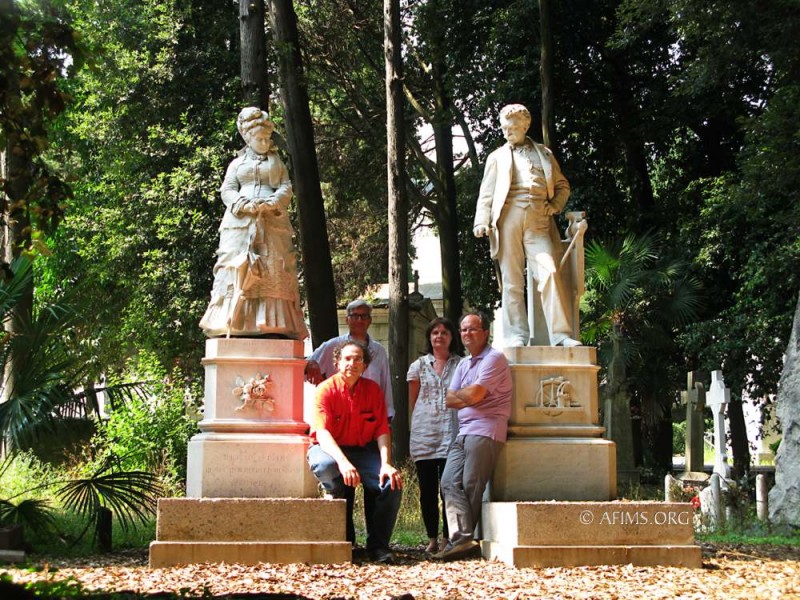Bentley & Whitehead Memorials, 1885 and 1887
Thanks to our generous sponsors, we were able to preserve and save these two unique masterpieces of the short-lived artistic style known as Bourgeois Realism. These were our first restorations. Work began in March, 2013 and took four months to complete.
These two sculptures are magnificent archetypical examples of the brief artistic period known as Bourgeois Realism or naturalism, an international style of the 1860’s and 1870’s. The sculpture of this period reflected the philosophy that the most important value for a person was their social and professional role. The fundamental values of this period were work, progress, family, charity and religion. The Whitehead and Bentley sculptures are prime examples of memorials that reflect these values. A reaction to the earlier style of romanticism, the Bourgeois Realism showed everyday activities and life without idealization or dramatization.
Lorenzo Orengo (1838-1909) was one of the principle proponents of this style. He was one of the most active and successful sculptors at Staglieno during this period and was noted especially for these two statues and for the statue of Caterina Campodonico, the “Hazelnut Vendor”, one of the best-known and most beloved sculptures in Staglieno.
This extreme realism required the highest level of technical skill from the sculptors and carvers, rendering the minutest details with absolute honesty and fidelity.
These are pivotal works of a fleeting period in art history, the culmination of centuries of development of realism, just as the more “modern” styles, impressionism, expressionism, and abstraction swept across the artistic landscape banishing the realist artists into one hundred years of obscurity. We are just now coming to once again appreciate and value this long neglected work.
These two statues are located in the Protestant Cemetery, a section just a few hundred meters inside the main entrance of Staglieno. The English engineer Benjamin Whitehead is portrayed with a workbench. At the base is a relief carving of a steam engine that he invented. His wife, Julia Bentley, is similarly depicted with minute attention to all the details of her lace, ornament, and her features. She commissioned these two works after her husband died. They were completed during her lifetime.
Unprotected and exposed to the elements, these significant marble sculptures were being attacked by moss and dirt. That was being absorbed into the surface of the stone and was causing the marble to soften and break down. Without the restoration these art works could have been lost to history.
The restoration was carried out by Francesca Saitta of Il Quadrifoglio Laboratorio D’Arte e Restauro in Genoa, Italy.
